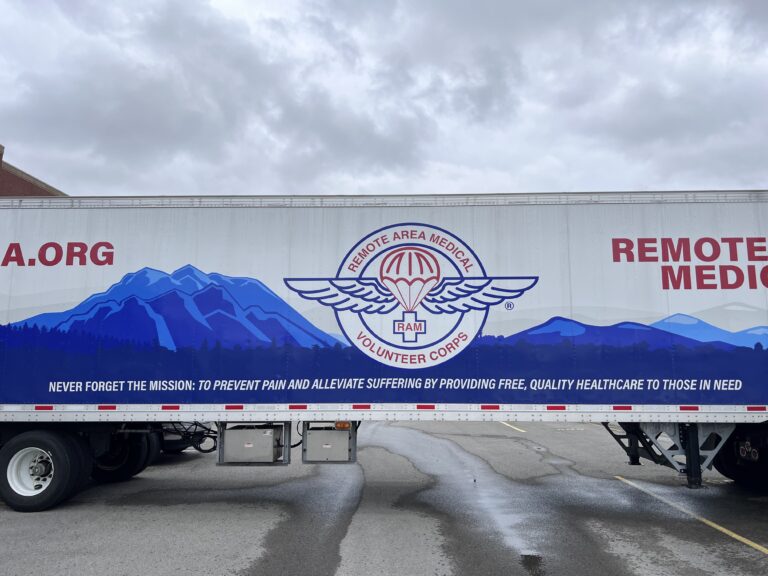This blog could be about travel, but it’s really about conversations I’ve had recently that show the impact on people of decisions about travel. Let me explain.
The interstate highway system – or the Eisenhower Interstate System as it’s branded – was begun in 1956 and officially completed in 1992 with the complex section through Glenwood Canyon, Colorado. I watched the roadbuilding in the 1960s – my father worked for Caterpillar Tractor Co and he took pride in the D8 bulldozer being the mainstay of the construction effort.

Many of the 48,756 miles were built through sparsely populated areas of the US. But where they went through urban areas the planners had a choice of route. In some cases, like Wallace, Idaho, the community lobbied hard to protect their town, so the interstate was put on stilts over the railway at the edge of town. In other cases, like the historic Black Greenwood neighbourhood of Tulsa, the residents didn’t have the organisation or power to oppose the planners’ route – the neighbourhood was destroyed for the second time, the first being the 1921 Tulsa Race Massacre.


The intended consequences of highway planning were to enforce segregation and lower the capital value of Black assets. Interstates did not plough through white neighbourhoods. Planners made choices in the Jim Crow era of the late 1950s and 1960s, and Blacks suffered.
Where white neighbourhoods were threatened by highways, planners met their match. Robert Moses in New York City ruled supreme – you can read about his reign as city planner in Robert Caro’s superb book, and catch the recent National Theatre play “Straight Line Crazy” with Ralph Fiennes as Moses.
Jane Jacobs was the nemesis of Moses when he went one highway too far and wanted to plough through Washington Square Park in NYC – I plan on visiting the park when in the city next week. Her book “The Death and Life of Great American Cities” became a rallying cry to either stop or tear down what the planners wrought.
The long term cost to reverse these planning decisions has been significant – Boston put its inner city highways in tunnels in the $15bn Big Dig, the Alaskan Way in Seattle was put into a tunnel, and San Francisco had the good fortune that an earthquake brought down the Embarcadero Freeway .


Closer to home, Glasgow managed to avoid the historic Forth & Clyde Canal being filled in with the Maryhill Motorway. Our house in Glasgow could have had a 4-lane road across the back lane if planners had had their way in the early 1980s. And near my flat in London, there is a plaque on the lovely, elevated Hammersmith flyover that extols its design features – given the economy, it will be many years til it can be tunnelised.
This is by way of saying that mistakes were made – but they’re still being made. I visited in Houston the site of the planned widening of I-65 , which would demolish the historically Black neighbourhood of Clayton. The federal government has called in the city’s plans, but already the homes are fenced off – at least not demolished.



They look pretty good to me. I met Joe who says the homes have been there as long as he can remember (he’s 70 – the houses were built in 1952). The estate was a post-war housing project that, even through the fence, looks well-maintained and once a vibrant community. But it was a Black community, so even today segregation by road planning continues.
As Moses’s road projects in NYC showed, increasing capacity means that more people will quickly cram the new roads. A road planner described to me that people are like water – they will find the easiest way. But America bet the house on the internal combustion engine, while other countries kept their public transport intact.
So it’s people like Joe and his neighbour Aaron who will suffer. Both live in tents under I-65. Joe has been there a year since displacement from Clayton, Aaron for three years. They live in a neighbourhood of tents, and Aaron prides himself in keeping his space tidy – he wants to start a landscaping business. But he’s struggling with a hernia and doesn’t know when he’ll get it sorted. Medical outreach services pull up occasionally, and the local Catholic Church regularly provides food. Joe keeps fit by regular exercise – lots of walking and making a dumbbell out of stones wrapped in a bike seat cover.


I wouldn’t want to live in a tent under an interstate. Yet both Aaron and Joe were surprisingly positive about their situation. They thought that America offered them a lot, which I found very surprising. When I told this story to Louis Bedford, an attorney I’d met at a Dallas voting rally, he observed what James Baldwin felt: “I can’t be a pessimist because I’m alive”. Joe and Aaron are alive.





8 Responses
Hi John, I stumbled on you blog by accident when I was catching up with LinkedIn notifications. I just wanted to say how impressed I was with your photos and your writing – really thought provoking. Good luck with your trip. If you make it back to the UK and anywhere near Bristol, do let me know so we can catch up properly.
Travel safely.
Steve
Cheers Steve, catch up next year! J
Hi John,
Am loving your blogs. Jim and Aaron – heroes. Your book when it is published must be required reading in schools and colleges.
Meanwhile, I am thinking of this Barack Obama quote “Change will not come if we wait for some other person, or some other time. We are the ones we have been waiting for. We are the change thhat we seek.”
Happy truckin’ John. And \Happy Thanksgiving – wherever you are!
Anne
Apologies to Joe. I called him Jim in error. Joe and Aaton, heroes both.
Anne
I think Joe and Aaron will answer to most things as long as they get a decent meal and some medical care. I wonder how they’re getting on in winter, though a lot milder down in Houston. J
I’ve been exploring for a little for any high-quality articles or blog posts on this kind of area . Exploring in Yahoo I at last stumbled upon this website. Reading this information So i am happy to convey that I’ve a very good uncanny feeling I discovered just what I needed. I most certainly will make sure to don’t forget this site and give it a glance on a constant basis.
Cheers, J
Im grateful for the blog.Much thanks again. Really Cool.